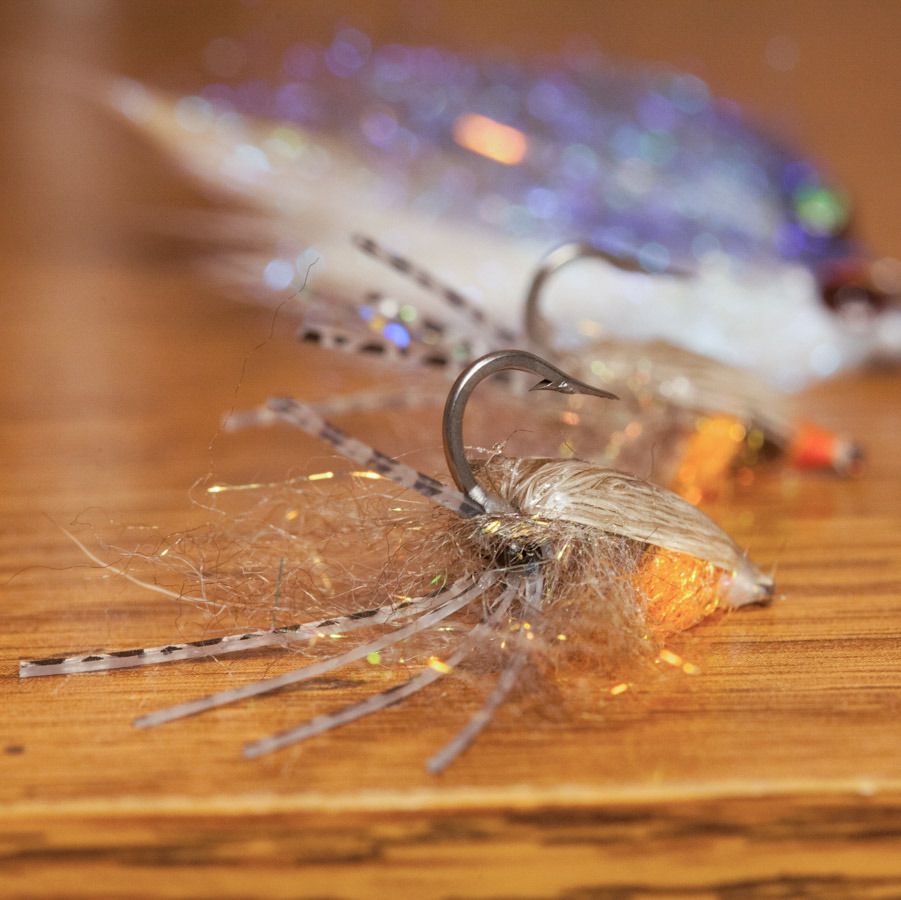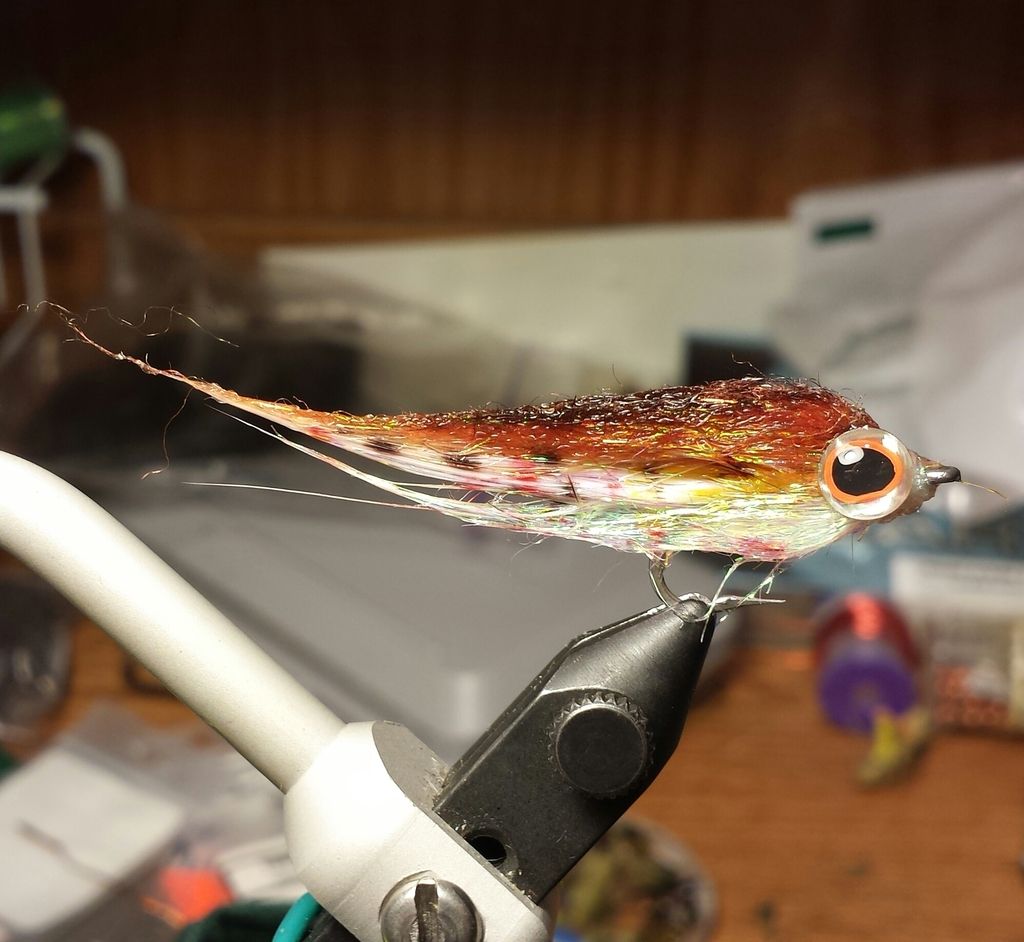-
Posts
859 -
Joined
-
Last visited
-
Days Won
20
Content Type
Profiles
Forums
Events
Store
Posts posted by RedBeard
-
-
FYI.. this query is unrelated to my query in the BC reports

-
I picked up a Kelty Child carrying backpack for some light hikes with my son who is 1.5 years old.
Quick question for any of you who have tried one of these child carriers. How long of a hike is too long for the little gaffers? Any tips for hiking with these carriers?
Thanks!
-
 1
1
-
-
-
Hey guys, I was having this issue too, and the tacky finish on my flies was collecting dust & dirt and making my UV wingcases and heads appear dusty and not clear.. I emailed Loon and this is the response I got.
Murray those flies you tied me way back did have a really nice UV epoxy shell on them. I may have to try the UV clear cure as well!
Hey Steve,
There is a short answer to your question and a long answer. I'll start with the short answer in case you're not interested in the long one!The short answer: all UV resins are subject to remaining a little tacky due to the way that the resins interact with oxygen in the air. It's not an issue of light, amount of time exposed, or anything that you're doing... it's that darn oxygen. The quick fix is to cure your resins and then wipe them down with an alcohol swab. This will remove the uncured resin from the top of the applied resin and you'll have a tack-free fly.The long answer....The science:The tack that you're experiencing is the result of "oxygen inhibition", which is a fancy way of saying that oxygen inhibits the outermost layer of applications of UV-curing resins to fully set up. In other words, the application should be cured all the way through, save that outermost layer that still feels tacky. If you picture a cross section of the resin, then imagine it curing from the inside out. The outermost layer, which is exposed to the ambient air, may remain tacky even though the rest of the applied resin is fully cured.The variables:Overcoming the effects of oxygen inhibition and producing a tack-free surface cure is dependent upon several factors, including:- Heat generated by the UV curing system
- Intensity generated over the entire UV spectrum (200-420 nm)
- Exposure time
The benefit:The tacky exterior provides a more suitable surface for bonding between subsequent layers.I hope that help Steve. Thanks for the email!Brett-
 1
1
-
Been trying to mimic an elk/deer hair mole crab pattern that I saw on google for my SoCal surf fishing trip...

-
 3
3
-
-
Wouldn't say my hook-ups have improved though...
-
I'm on the same boat as you. Went from the SA GPX to casting the Preception.. Now I don't think I'll buy a different kind of fly line. It's unreal!
-
I have a love hate relationship with glass beads..
Love the look of the flies, hate how the glass beads break on rocks on the bottom
-
Sorry ^^
Ya I'm pretty sure some black rubber ones. Give 'em a call
-
Are you sure they are the rubber nets? Thats where i bought the mesh net bag for my first net project. Didn't see any rubber ones though. This was a year and a half ago so they may carry them know. Thanks
-
Wholesale has them. 20 bux
-
I'm getting to the point you were two years ago... Fly fishing is fading hobby right now with parenthood, but I've been tying more and will be building some rods soon here.
See ya in a couple of years! lol
-
 1
1
-
-
I think you can eventually catch up to the materials/tools purchases, but it's takes a lot of tying

I started with a vise, tools and only a few materials to tie up about 5 of my favourite patterns. In just over a year I've spent over $1200 on tying materials (hackles are the killers) and tied roughly $900 worth of flies. I feel like I have a good amount of materials for all of my favourite patterns now and only use the flies I tie when fishing, which is rewarding for me!
I also got a smoking deal on hooks from murray (thanks again Murray!) which helped me hit the ground running.
-
Nice post! Good work on obtaining at least a partial bathymetric map

-
Fn lions and tigers and bears!
-
-
good point bd. thanks!
-
-
Love those flies Terry, thanks for passing on the How to!
-
DAMN! I have to miss this one... next time
-
Hahaha for sure. Probably a good thing for saltwater and bones
-
Whoa those are large arbours! haha

-
Snout sold me a 5wt One about a month ago and it's hands down the best rod I've cast... It casts huge distances with no effort and can handle tungsten nymph and streamer rigs on the bow. It seems to be very deadly in close as well with good loading, tight loops and good accuracy. My One is paired with the RIO perfection line and it's a match made in heaven. The grip on the one is so comfortable as well, fits my hand perfectly. All my personal preference of course. It was tagged as borderline too stiff on the 5wt shootout, but it doesn't tire my arm or hands like other fast action rods.
Snout missed the One that he sold me so much that he bought another one used from a guy lol.
Ps. I prefer the Trident 5 wt shootout because it's a combo of a bunch of anglers with different skill levels instead of george anderson's opinion


Price: $775
Weight: 2.7 oz
Line Recommendation: Scientific Anglers GPX
95 points. Sage’s flagship rod, the ONE was the first rod to utilize Konnetic technology. It’s built in Washington and encompasses everything Sage has stood for from day 1. Better casters and those with faster casting strokes reallyliked this rod. They highlighted the ONE’s “great feel” and “effortless distance.” In this test, however, they were overruled by the masses who preferred a more moderate rod.
Casters liked: A favorite amongst new-schoolers with faster casting strokes and better casters.
Not so much: Too fast for the average user.
Bottom Line: Every bit a Sage, the ONE is perfect for the faster caster, but the Method doesn’t give up much in terms of feel and close in accuracy and gives you a lot of extra power.
-
That's a beauty rod!





Child Carrying Backpacks
in General Chat - Not Fishing Related (NFR)
Posted
Had a chuckle on the sticky feet hah.
Thanks for the help. Really just looking to get outside with him while mom is at work!